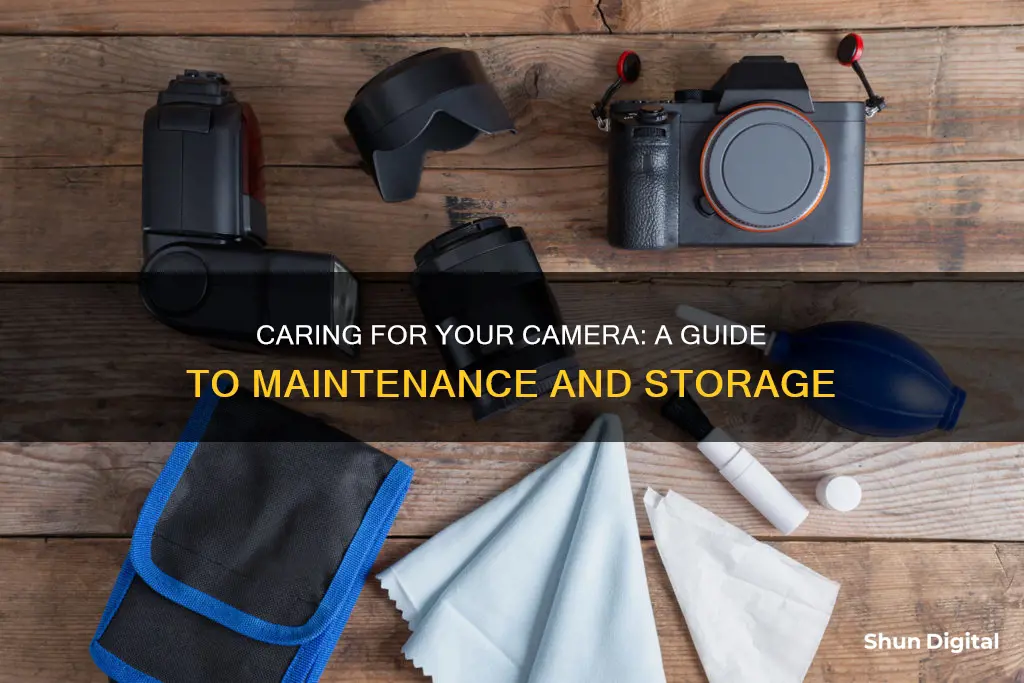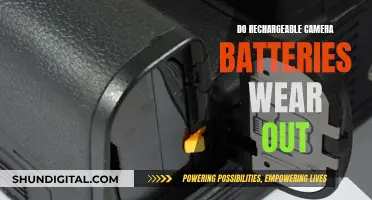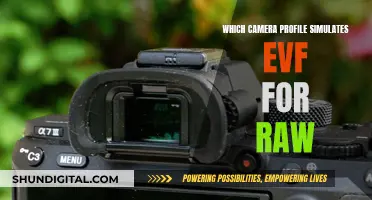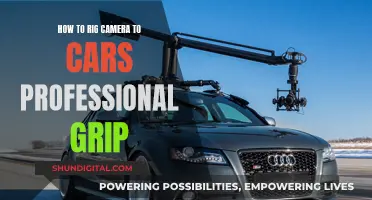
Photography equipment is expensive, so it's important to take good care of your camera and other gear. Regular maintenance and cleaning will ensure your camera lasts for years and continues to perform well. Here are some tips on how to care for your camera equipment:
- Use a good camera bag or carrying case to protect your gear when not in use and during transportation. Look for a bag with padding and latches or zippers to keep everything secure.
- Keep your camera and lenses clean. Use a blower brush or air blower to remove loose particles, and then use a microfiber cloth and cleaning solution specifically designed for camera lenses to wipe away smudges and fingerprints.
- Protect your camera from dust and moisture. Always keep your camera covered when not in use and use lens caps and body caps to prevent dust from settling. If shooting in dusty or wet conditions, consider using a protective filter or a rain cover.
- Store your camera equipment properly. Store your gear in a cool, dry place away from direct sunlight and extreme temperatures. Use dividers or compartments in your camera bag to keep your equipment organised and protected.
- Handle and transport your camera safely. Always hold your camera with both hands to prevent accidental drops. When changing lenses, do it in a clean and stable environment to minimise the risk of dust entering the camera body.
- Regularly check and replace camera accessories such as batteries, memory cards, and lens filters. Keep your batteries charged and store your memory cards in a protective case.
- Update your camera firmware and software regularly to improve performance and functionality.
- Calibrate your camera settings, such as autofocus and white balance, for optimal image quality.
- Have your camera serviced regularly by a reputable technician to identify potential issues and prolong the lifespan of your gear.
What You'll Learn

Use a camera bag
Using a camera bag is one of the most important steps in caring for your camera equipment. A camera bag is your first line of defence in protecting your camera and other photography gear. When choosing a camera bag, opt for one that fits your equipment and that you will actually use. It should have padding and latches or zippers to keep everything securely in place.
- Utilise the compartments: Camera bags typically have compartments divided by protective foam inserts. Use these compartments to separate and protect your gear. Store your camera and lenses in the middle or at the bottom of the bag, as these areas offer the most padding. Reserve the smaller compartments for filters, spare batteries, remote controls, and other small items. Keep your memory card in a small zip pocket for easy access.
- Detach equipment: DSLRs and mirrorless cameras are designed to be taken apart. Detach the lenses from the camera body and store each item separately in their own compartments. This prevents stress on the mounting threads, reducing the risk of damage over time.
- Wrap your equipment: If your camera bag does not have protective foam inserts, or if you are using a regular backpack, use padded cases, wraps, or bags to protect your equipment. You can also wrap your lenses and camera bodies in socks or beanies for extra cushioning.
- Store everything snugly: Ensure that your camera and lenses are cocooned in their cases and fit snugly within the bag to prevent movement during transit. This not only protects your equipment but also makes it easier to find what you need.
- Use silica gel packs: Include silica gel packs in your camera bag to absorb moisture and protect your equipment from moisture damage, especially when venturing into areas with high humidity or condensation.
- Label your equipment: Label each lens pouch or compartment with the type of lens inside using a permanent marker or a silver Sharpie and a stencil. This allows for easy identification and access to the lens you need at any given moment.
- Avoid pointing the lens down: When placing your camera in the bag, avoid positioning it with the lens pointing down. Lenses are delicate and more valuable than camera bodies. By pointing the lens to the side or front of the bag, you reduce the risk of breaking the lens if the bag is dropped or set down forcefully.
By following these tips and utilising your camera bag effectively, you can ensure the safety and longevity of your camera equipment.
NJ Police Car Cameras: Always Recording?
You may want to see also

Clean your camera and lenses
Cleaning your camera and lenses is one of the most important things you can do to maintain your equipment. Here is a step-by-step guide to cleaning your camera and lenses:
Step 1: Use a blower brush or air blower
Use a blower brush or air blower to remove any loose particles from the surface of your camera and lens. Be careful not to touch the sensor or lens directly with your fingers. This step is important to avoid dragging dust and causing scratches on the lens.
Step 2: Use a microfiber cloth and cleaning solution
Next, use a microfiber cloth and a cleaning solution specifically designed for camera lenses to gently wipe away any smudges or fingerprints. Remember to clean both the front and rear elements of your lens thoroughly. Regular cleaning will ensure optimal image quality and prevent dust spots on your photos.
Step 3: Be gentle
When cleaning your camera and lenses, it is important to be gentle. Do not apply too much pressure, and use a light brushing or circular motion when wiping the lens. You don't want to risk scratching the glass or damaging any special coatings.
Step 4: Pay attention to the lens cap
Before placing the lens cap back on, check it for any grit or dust that could end up back on your newly cleaned lens. Give the lens cap a quick once-over with the blower and a paintbrush to keep it clean.
Step 5: Clean the rear element
Use a rocket blower to clean the rear element of the lens, which is the part that goes inside your camera. Make sure the bottom of the lens is facing down to prevent dust from falling back on it. You can also use a microfiber cloth or lens pen to clean the rear element, especially if it is more exposed.
Step 6: Clean the lens mount and contacts
Use a clean towel or microfiber cloth to wipe down the lens mount and contacts. You can use a small amount of alcohol on a cotton tip to clean the contacts and prevent errors between the camera and lens caused by a build-up of grime.
Step 7: Clean the outside of the lens
Use a paintbrush to remove any dust from the outside of the lens and then wipe it down with a towel. If you've been in a salty environment or your lens has come into contact with liquids, dampen the towel with fresh water to remove any salt or other residue.
Additional tips:
- Never use compressed air or canned air to clean your camera or lenses, as it can contain chemicals that can damage your equipment.
- Always turn off your camera before cleaning or making any changes, such as swapping lenses or memory cards.
- Be careful not to touch the lens or LCD screen with your fingers, as oils from your skin can cause smudges and permanent damage.
- If you encounter stubborn smudges, you can use commercial LCD screen cleaners or a small amount of cleaning liquid on a cloth.
Troubleshooting a Slow Camera: Computer Vision Woes
You may want to see also

Protect your camera from dust and moisture
Dust and moisture are two of the biggest enemies of camera equipment. Here are some tips to protect your camera from dust and moisture:
- Always keep your camera body covered when not in use. Use lens caps and body caps to prevent dust from settling on the lens or entering the camera body.
- If you're shooting in dusty environments, consider using a protective filter on your lens to minimize the risk of dust particles reaching the front element.
- When shooting in rainy or humid conditions, use a rain cover or waterproof housing to shield your camera from moisture.
- Store your camera equipment in a cool, dry place, away from direct sunlight and extreme temperatures. Avoid storing your equipment in places prone to moisture, such as basements or attics.
- Use silica gel packets in your camera bag to minimize humidity and prevent moisture-related issues.
- If you're travelling with your camera, invest in a sturdy camera bag that offers ample padding and protection. Securely fasten your camera and lenses within the bag to prevent any movement during transit.
- Avoid changing lenses in dusty or wet environments. If you need to change lenses outdoors, use your camera bag or the inside of your jacket as a shield to protect your camera from the elements.
- If you're near the ocean or other bodies of water, keep your camera in a plastic bag or good case to protect it from splashes and moisture.
- When drying a wet camera, remove the battery, memory card, and lens. Place the gear in a warm, dry place and let it air out for up to 24 hours.
- Use a blower brush or air blower to remove dust particles from your camera and lens. Be careful not to touch the sensor or lens directly with your fingers.
Focus by Wire: Mirrorless Camera Autofocus Explained
You may want to see also

Store your camera equipment properly
Storing your camera equipment properly is essential to protect your gear when it's not in use. Here are some detailed instructions on how to store your camera equipment correctly:
- Always store your camera equipment in a cool, dry place, away from direct sunlight, heaters and extreme temperatures. Avoid storing your gear in humid areas such as basements or attics.
- Invest in a high-quality camera bag or case that provides adequate cushioning and protection. Look for a bag with padding, latches, and zippers to keep your equipment secure and safe from scratches or accidental damage.
- Utilize dividers or compartments within the bag to keep your camera body, lenses, and accessories organized and separate. This helps to prevent scratches and accidental damage.
- Consider using moisture-absorbing silica gel packets or rice inside your camera bag to minimize humidity and prevent moisture-related issues, especially if you live in a humid climate.
- Store your camera equipment in its case or bag when not in use, and keep the bag in a dry, warm area.
- Keep your lenses stored snugly in a camera bag or lens case when not in use. Store them with front and rear caps on to prevent scratches.
- If you have off-camera flash equipment, store them properly when not in use. Remove the batteries and store them separately in a cool, dry place away from combustible materials.
- Store your memory cards in a protective case at room temperature to avoid wear and tear on the plastic housing and prolong their longevity.
- Consider using a digital dry cabinet if you live in a very humid or damp climate. These cabinets regulate humidity and provide a small, cozy space for your camera gear.
- If you're not going to use your camera for an extended period, remove the batteries and store your camera without the battery inserted to reduce the risk of corrosion.
- If you have insurance for your camera equipment, make sure to keep it up to date and provide an itemized list with serial numbers.
- If you're storing your camera for a long period, consider getting it serviced and inspected by a professional technician to ensure it remains in optimal condition.
Cars and Camera: A Gay-Friendly Show?
You may want to see also

Handle and transport your camera safely
Transporting your camera safely is one of the most important aspects of camera care. Here are some tips to ensure you are handling and transporting your camera correctly:
- Always use a camera bag for transportation. Camera bags are designed to keep your camera safe from scratches, dust, and rain. They come in a variety of sizes, colours, and price ranges, so you can easily find one that suits your needs.
- Ensure your camera bag has padding and latches or zippers to keep everything in place.
- If you are carrying additional lenses, flashes, or strobes, invest in a separate case for them. This will ensure that their small, delicate components are secure during transport.
- Get into the habit of zipping or latching your camera case when it is not in use. That way, if your bag gets knocked over or jostled, your gear will stay safely inside.
- Keep your camera bag in a dry, warm area, away from heaters and direct sunlight.
- When shooting, make sure your camera is secure and protected with a strap. This will prevent it from slipping out of your hands or getting knocked over or stolen if you set it down.
- If you don't like using a camera strap, consider using a tripod instead.
- If you are shooting in dusty or wet conditions, invest in a rain cover for your camera. Even if your gear is weather-sealed, it's better to be safe than sorry.
- When changing lenses, do it in a clean and stable environment to minimise the risk of dust entering your camera body.
- Always hold your camera with both hands to ensure a secure grip and prevent accidental drops.
- When travelling with your camera gear, securely fasten your camera and lenses within the bag to prevent any movement during transit.
- Avoid leaving your camera unattended or exposed to harsh conditions, such as extreme heat or cold.
LaView Cameras: Where Are They Manufactured?
You may want to see also







